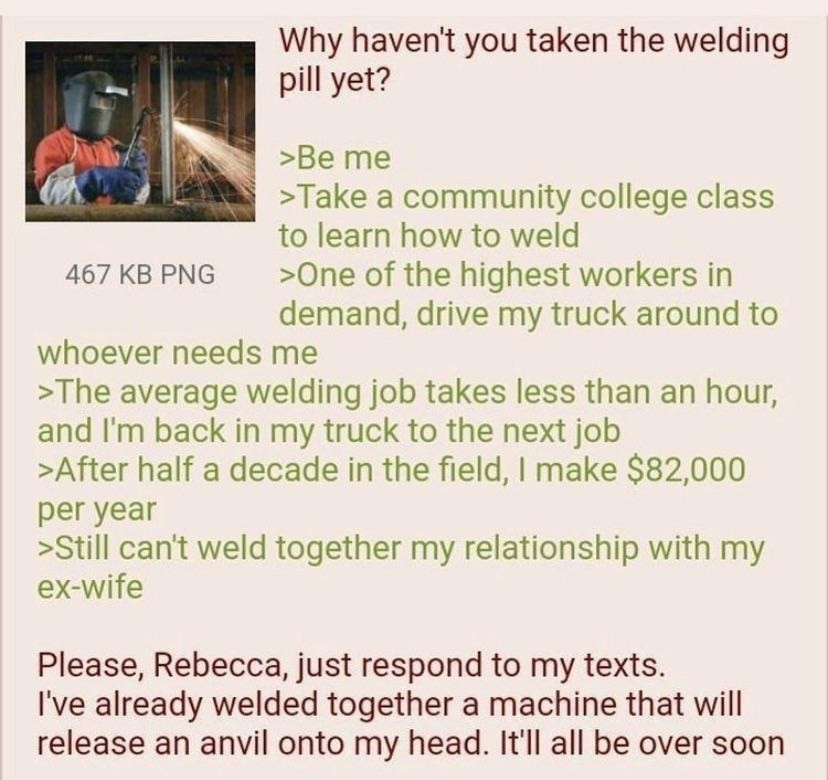this post was submitted on 30 Sep 2024
682 points (98.0% liked)
Greentext
4375 readers
1842 users here now
This is a place to share greentexts and witness the confounding life of Anon. If you're new to the Greentext community, think of it as a sort of zoo with Anon as the main attraction.
Be warned:
- Anon is often crazy.
- Anon is often depressed.
- Anon frequently shares thoughts that are immature, offensive, or incomprehensible.
If you find yourself getting angry (or god forbid, agreeing) with something Anon has said, you might be doing it wrong.
founded 1 year ago
MODERATORS
you are viewing a single comment's thread
view the rest of the comments
view the rest of the comments

Just looked it up and N95-P100 masks/respirators cover most exposure that welding should create. I’m a hobbyist welder, but wear a P100 respirator 95% if the time (100% indoors).
From NIOSH:
I kinda want to know how thick that smoke looks
I think it splits hydrogen off of water molecules too, so if it’s at all humid in there, it might be explosive too.
Manganese does not split hydrogen from water molecules. I think you might have it mixed up with magnesium, which does but not at a high enough rate to release an explosive amount even if it's liquid water and solid magnesium.
Sodium and lithium do release enough hydrogen to be explosive and enough heat to ignite it when they are solid in liquid water, but I suspect the gases wouldn't do that. The density is way lower, and if it does prefer stripping hydrogen from water molecules to just pairing up with the the O2 ones (some reading suggests that this is the case for solid sodium exposed to air), I bet the recently freed hydrogen will take that heat and just join up with the free O2 itself before it has a chance to build up. And the source would also be more spread out, so there wouldn't be any reason for a high concentration to form even if the hydrogen doesn't react immediately with O2 in the vicinity.
Not that welding isn't an explosive risk, but it's usually due to the tanks used directly by the welding and/or explosive/accelerant materials in the vicinity of the weld.
If someone offers you $80k to weld their fertilizer tank because it's too full and they want to add an extension, politely decline and consider avoiding the general area until after it explodes.
There is no vessel in the known universe I would weld for any amount.
(Mostly because I’m self taught and know that every mm of weld counts on those things).